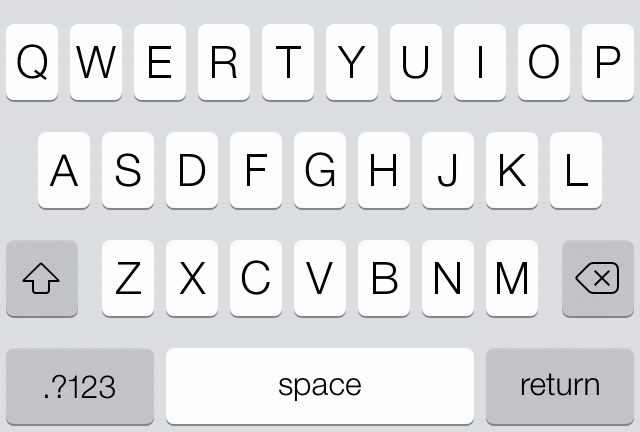

- Phone keypad layout how to#
- Phone keypad layout software#
- Phone keypad layout Pc#
- Phone keypad layout windows#
Phone keypad layout windows#
In Windows the mapping can be manipulated as you like because mapping is defined in the registry!
Phone keypad layout Pc#
In all applications this key number “91” stands for character number “7” and is mapped by the PC or better, by the operating system. For example a keyboard communicates that key number 91 is pressed (and not character "7"). You have to know that in reality the keyboard just sends a number to the PC, the number of the key. Now, we have to force the PC and convince it that "7" is "1". USB keyboards are very common and even special Num-Blocks are available.Īnd here we are, your new and telephony compliant keyboard!īut of course only the labeling has changed. Maybe the angle of the cap is not perfect, but that is not a real problem and depends on the keyboard design. The hardware part is very easy: just remove the keycaps and put them on in another way:
Phone keypad layout software#
To achieve that we have to manipulate the hard- and software keyboard. So it would be nice to have a Dial-Keyboard which is identical to the phone set one, something like this: Result: the operator prefers using the phone keyboard to the PC keyboard which means constant toggling from one keyboard to the other. So dialing using the keyboard is very different to dialing from a phone set. You see “456” is identical, but “123” should be “789”. The numbers go from 7 to 0, a "789-456-123-0" keyboard layout. The numbers go from 1 to 0, so a "123-456-789-0" keyboard layout.Īnd this is the keyboad of the number-block on a PC: Why? Well, look at this: This is the layout of a phone set: If a PC keyboard is used for telephony (typically the operator) the user has a frontend which is different to the telephone one. Meanwhile check out our Beginner Worksheet Pack which has grammar worksheets, reading practices, grammar cheatsheets and exclusive posts on study strategies, all tailored for the beginner level.This information applies to Operator and any other application using a PC keypad for dialing That’s it! You are all set to use the Korean keyboard on phone. To work around this, either you can space out typing the two ㅇs or tap the arrow button between the two ㅇs to tell your phone that you are moving on to another character. If you type this out quickly, the last ㅇof the first character and the first ㅇof the second character will be treated as a double tap by your phone and gives you ㅁ instead. For example if you want to type 영어, the tapping sequence would be ㅇㆍㆍㅣㅇㅇㆍㅣ. In general, for consonants buttons, tapping once or swiping to the left gives you the basic form, tapping twice or swiping to the right gives you the aspirated form and finally tapping three times or swiping down will give you the double consonant.įinally you may wonder what is the use of the arrow button at the bottom left hand corner.

Alternatively if you prefer to swipe, swipe right for ㅋ and down for the double consonant ㄲ. Similarly for consonants you can also type by either tapping or swiping.įor example to type ㄱ tap once on the button ㄱㅋ. ㅖ is typed by first swiping up on the ㅣ button and then tapping the ㅣbutton again. If you hold down on the ㅣ or ㅡ buttons, they tell you the vowels represented by each swipe direction.īonus: holding down / long pressing a button will give you the corresponding number like a number pad!įor compound vowels, simply type out the component vowels in the right sequence. In general you start with the button with the long stroke and swipe to the direction of the short stroke. For example to type ㅏ, you only need to swipe right on the button ㅣ. Only the ㅣand ㅡbuttons are required to type any vowel. On the other hand, ㅛ is typed by tapping ㆍtwo times then the horizontal stroke ㅡonce. The button ㅣ represents the long stroke in vowels and the ㆍ represents the short stroke.įor example if you want to type ㅏ, simply tap ㅣfollowed by ㆍ. There are two ways to type vowels: tapping and swiping.
Phone keypad layout how to#
Now let’s first look at how to type vowels. Vowels are typed using the top three buttons and consonants are typed using the remaining 7. The 10 key keyboard is also called the 천지인 키보드 in Korean. I personally favour the 10 key keyboard which may seem intimidating at first, but once you get used to it, you would realise the sheer beauty of the keyboard design. The most commonly used Korean keyboards in the mobile phone are the standard one (the same as the normal QWERTY type keyboard) and the 10 key keyboard.


 0 kommentar(er)
0 kommentar(er)
